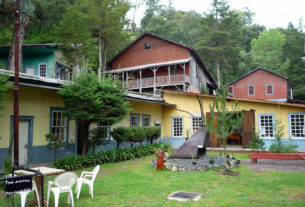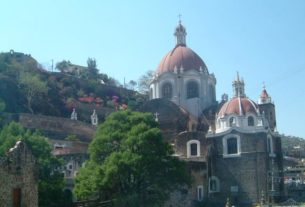G. M. Bashford’s Tourist Guide to Mexico was first published exactly seventy years ago in 1954. It was one of a spate of motoring book guides written after World War II as Americans began to hit the open road and drive south in search of sunshine and adventure.
How much has Mexico really changed in the past seventy years? The answer is: in some ways lots, and in other ways almost not at all.
The following extracts from Bashford’s book give the flavor of his anecdotal writing style, and of the subjects which occupied his attention.
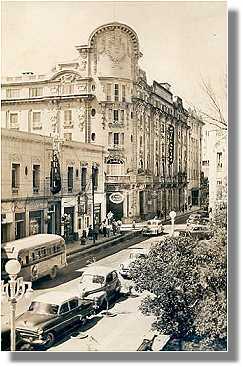
Monterrey
“The trademark of the city is the 5,700-foot-high Cerro de la Silla (Saddle Mountain), which rises above the city and is seen from every direction. The thrifty Regiomontanos, as the people of Monterrey are called, tell a story about how the saddle in the mountain was formed. According to the legend, an ambitious mountain climber took an early morning stroll to the summit of what was then a cone-shaped mountain, to watch the sunrise. As he was about to return, a centavo piece fell from his pocket, and before he had finished digging for it, there were two peaks instead of one.”
Mazatlán
After naming five hotels (Belmar, Freeman, Central, Imperial and Morales), Bashford warns that:
“Existing hotels in Mazatlán are hopelessly inadequate. Check on arrival to see if new hotels have been completed.”
For local sightseeing, he explains that:
“Araña, calèches, surries or buggies, as you choose to call them, are for rent with driver at the Hotel Belmar and various other points in the city.”
And, if you think highway 15 is bad today, you should have driven it fifty years ago!
“The road south from Mazatlán is good, except for a few missing bridges. Motorists should be careful not to travel too fast, as some of these detours are unmarked, and may be come upon suddenly.
“About an hour out of Mazatlán the highway enters the state of Nayarit, and shortly afterwards the Acaponeta River is crossed – on a ferry. In case the ferry is not working, there is a ford about a mile upstream which can be crossed in dry weather. Two more rivers, the San Pedro and Santiago, remain to be crossed, both by ferry pending completion of the bridges. If the traffic is heavy, considerable time may be lost at the ferry crossings. At some of the ferries, passenger cars take precedence over trucks, which fact is stated on signs.”
Tequila and Beautiful Women
Bashford seems unsure of the true quality of tequila…
“When thoroughly fermented, it is consumed either straight, or with lemon and salt, taken alternately. A more agreeable possibility (not to be broached in the presence of the local folk) is to combine it with sugar, lemon, etc., in a tequila sour, and drink it as a cocktail. The consensus among all but the most rugged foreigners is that taken straight, as in Jalisco, it leaves much to be desired as a refreshment. If, however, it must be taken straight, the tipo almendrado (with almonds) is best.”
… but very sure about the most beautiful women in Mexico:
“Within Mexico, Guadalajara is famed as the land of the legendary wine, women and song, except that here they are called tequila, Tapatías, and mariachis. The Tapatías, who are always given preference even over the wine and song, are by reputation the most beautiful women of Mexico.”
Lake Chapala
After listing six hotels for Guadalajara – Morales (Calle Corona), Del Parque (Vallarta), Guadalajara (Colón), Fenix (López Cotilla; 25 pesos for a double), Roma (Juárez) and Clemen Courts on the Mexico City highway – Bashford sets off for Chapala.
“Chapala, a quaint town of 5,000 inhabitants located on the north shore of the largest lake in Mexico, is 30 miles south of Guadalajara on a high-speed highway.
“Due to the increasing demands for water on the Lerma River, and the shortage of rainfall in recent years, the level of Lake Chapala has decreased steadily for the past several years. In 1952 it was practically impossible to go boating or swimming on the lake.
“However Chapala is still a charming pueblo, and a better place for rest would be hard to find. There are two good hotels. Villa Monte Carlo is a first-class hotel a mile from town, well managed by Señora Martha Viteri de Morales. Rates are 15 to 45 pesos single, and 40 to 60 pesos double; meals are 20 pesos per person per day. There are four deluxe bungalows. The Hotel Nido, in town, is another good hotel, with rates 15 to 25 pesos single, and 25 to 50 pesos double; meals are 20 pesos per person per day.”
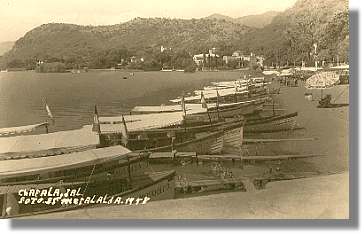
Ajijic just qualifies for a single paragraph.
“Ajijic is a picturesque pueblo a few miles west of Chapala on the lake, not quite so interesting as some stories would have you believe. It recently has become an artists’ colony. Some hand-painted and hand-loomed fabrics are made here by enterprising Americans. Inquire for locations at Posada Ajijic.”
Single paragraphs are also sufficient for Ocotlán and Jocotepec.
“Ocotlán, on the northeast corner of Lake Chapala, is another picturesque pueblo, as yet “undiscovered.” Every day goods are brought in canoes from other pueblos on the lake to trade in the market.”
“Jocotepec is at the western end of Lake Chapala, 40 miles from Guadalajara via the Mexico City Highway. Also may be reached by gravel road from Chapala.”
Puerto Vallarta
Bashford shows considerably more enthusiasm for various side-trips from Guadalajara and Chapala, including Puerto Vallarta,
“the most charming and least-known pueblo in Mexico. It is a fishing village of 4.800 people located on the Pacific Coast due west of Guadalajara. Its charm lies in the fact that until a few years ago it could be reached only be sea. Thus the people have not yet come to regard tourists as a necessary evil, as in some of the more frequented resorts. Here is found complete democracy: even the mayor can be seen sweeping the street in front of his house every morning!
“Although there are no architectural masterpieces in the town, some of the old buildings provide excellent material for good camera shots… There are no shops catering to tourists….”
San Miguel de Allende and Morelia
Elsewhere, Bashford mentions only three hotels in San Miguel de Allende:
“the Posada San Francisco on the zócalo (double 75 to 95 pesos American plan), the Colonial, one block to the west (30 pesos) and the Arias 4 blocks away on Mesones near the market (20 – 30 pesos; main attraction ping-pong).”
Morelia does not do much better. Four hotels are mentioned: “Virrey de Mendoza (Portal Matamoros 16 on the zócalo; 24-44 pesos a double), Valladolid (Portal Hidalgo 241 on the zócalo), Casino (Portal Hidalgo 229 on the zócalo) and Oseguera (Avenida Madero Oriente 24, a block from the zócalo).”
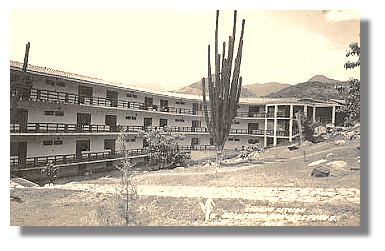
These hotels were far surpassed in Bashford’s estimation by the finest hotel in this region, the Balneario de San José Purúa (which sadly has long been closed). A road branches off highway 15 and leads to:
“San José Purúa, and one of the most spectacular views in Mexico. The pueblo is noted for its radioactive waters, and its fame has spread widely – cars from seven different countries have been seen in town at the same time. (Single 70 pesos, double 110 pesos, American plan).”
Road Conditions
When Bashford’s book was published, the Pan-American highway had still not been completed.
“The Tehuantepec-Tuxtla highway (immigration inspection at Juchitan) is nearly straight, and good time can be made. Two hours’ drive from Tehuantepec is Las Cruces, where a road turns right to Arriaga. This pueblo, on the railroad to Tapachula (Guatemalan point of entry), is the logical point of shipment for motorists who wish to send their cars to that country. It is still impossible to drive all the way, there being no highway connection between Ciudad Cuauhtemoc and the Guatemalan capital. Rail freight is about 300 pesos per car. The trip is scheduled to be made in 10 hours, but often takes as long as 20. There are no Pullman accommodations, and the trip is recommended only to the hardiest of travelers.”
The author frequently found roads that were less than perfect:
“The drive from Mexico City to Acapulco includes the best and the worst roads in Mexico. Two stretches of the new freeway are now open, but beyond Iguala (the southern half of the trip) the road is in a sorry state. Although Acapulco can be reached from Iguala in from 4 to 5 hours, the trip itself is unrewarding.
“Pending completion of the new highway beyond Iguala, 5 hours or more are necessary for the 160-mile trip to Acapulco, depending on the extent of the rains and the ambition of the maintenance crew assigned to the area.”
Acapulco
The resort of Acapulco was thriving:
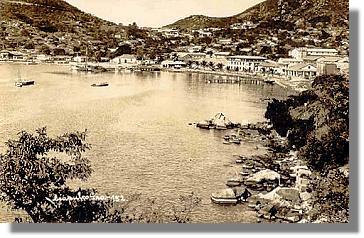
“The original atmosphere of the old port exists no more. There are now broad paved streets, modern stores, and dozens of hotels, several of them large luxury establishments. The beaches are crowded with people, and it is necessary to look far for the proverbial native sleeping in his hammock beneath his sombrero or lazily drinking coconut milk. There are, of course, compensations for the lost atmosphere: comfortable hotels, lively night clubs, a country club and facilities for all known water sports. And the natural beauty of the place is such that no amount of modern construction could change it.”
San Cristobal de Las Casas
The city of San Cristobal de Las Casas fascinated the author:
“The social organization of the city is the most interesting in Mexico, each trade monopolizing a different section of the city, which has its own name, patron saint, and holidays. The distinct neighborhoods also usually represent a different tribe. For example, the Aztecs who came with Mazariego stayed to found the Barrio (district) Mexicano, and today are dedicated to weaving and dyeing. In the Barrio Cerrillo dwell the blacksmiths, in Barrio Guadalupe the toymakers, in San Ramon the potters, and in Santa Lucia the makers of fireworks! Around the first part of the seventeenth century a group of malcontents from Guatemala came to town and formed their own barrio: Cuxtitali.
“The greatest interest, however, is the market where can be seen Indians from a dozen distinct tribes, each with its own type of dress.”
Curious Attractions and Indian Distances
Tell it like it is! Bashford found an unexpected attraction at the Villa Granados hotel in Tehuacan, Puebla:
“Excellent cuisine. Attentive service by Señorita Amelia. Friendly atmosphere. The antics of Genaro, the gardener, are alone worth the price of the hotel. When he is not aware of an audience, he goes about his chores singing an unending repertoire of canciones rancheros, occasionally dancing with the hose, broom, or dog.”
But don’t ask how far it is…
“To the Mexican Indian, distance is directly related to time, and therefore of no importance. When enquiring distances in the country, be prepared to accept the answer in leagues (leguas). For the uninitiated, a legua is equal to two whoops and a holler, or not quite so far as up yonder.”
Veracruz
Bashford appears to have enjoyed Veracruz, which even then had a population of over 100,000, and tells a charming tale of social one-upmanship:
“In spite of the vicissitudes of the climate, the Veracruzanos are a merry people. Immigration from all over the world has left its mark on the city, and many of the inhabitants are darker or lighter than Mexicans elsewhere, depending on the origin of their forebears. Apart from music, the only fetish of the people is gold teeth. Every small boy dreams of the day when he will be rich enough to have his teeth capped with gold. And, if he is very successful, he will someday be rich enough to have a tooth pulled and a removable replacement made. Then he will stand in the plaza in the evening, listen to other marimbas and, as the fair maidens pass, remove his tooth, polish it, and ceremoniously replace it.”
Oaxaca
One of the most extravagant tales in Bashford tells how one particular cathedral bell in Oaxaca had to be tried for heresy:
“The Holy Office held proper and exhaustive hearings, and having found the bell guilty, condemned it to be struck throughout eternity. Charles V of Spain, in hearty approval of the sentence, hastened to make a gift to Oaxaca of a clock, complete with striking mechanism. Even today the clock may be seen on the cathedral tower, periodically chastising the guilty bell.”
The Yucatan
The Yucatán Peninsula (Cancún) was still undiscovered:
“One of the most fascinating and least visited of the Mexican archeological areas is the Yucatán Peninsula, located two and a half air hours south of New Orleans, and the same distance east of Mexico City. Before the advent of the airways the peninsula was isolated to all but ocean travelers or an occasional unfortunate who fell prey to the passenger agent of the wood-burning train that from time to time made its way there. Because of its geographic isolation from the rest of Mexico, Yucatán has grown up almost independently: historically, economically, and socially it is a nation apart.”
Reference:
- Bashford, G.M. (1954) Tourist Guide to Mexico. McGraw-Hill.
Did You Know Index
Quotations © Copyright 1954 by William L. Bashford, Jr.
Commentary © Copyright 2004 by Tony Burton. All rights reserved.

